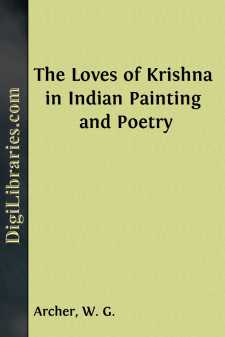Categories
- Antiques & Collectibles 13
- Architecture 36
- Art 48
- Bibles 22
- Biography & Autobiography 813
- Body, Mind & Spirit 142
- Business & Economics 28
- Children's Books 15
- Children's Fiction 12
- Computers 4
- Cooking 94
- Crafts & Hobbies 4
- Drama 346
- Education 46
- Family & Relationships 57
- Fiction 11828
- Games 19
- Gardening 17
- Health & Fitness 34
- History 1377
- House & Home 1
- Humor 147
- Juvenile Fiction 1873
- Juvenile Nonfiction 202
- Language Arts & Disciplines 88
- Law 16
- Literary Collections 686
- Literary Criticism 179
- Mathematics 13
- Medical 41
- Music 40
- Nature 179
- Non-Classifiable 1768
- Performing Arts 7
- Periodicals 1453
- Philosophy 64
- Photography 2
- Poetry 896
- Political Science 203
- Psychology 42
- Reference 154
- Religion 513
- Science 126
- Self-Help 84
- Social Science 81
- Sports & Recreation 34
- Study Aids 3
- Technology & Engineering 59
- Transportation 23
- Travel 463
- True Crime 29
The Loves of Krishna in Indian Painting and Poetry
by: W. G. Archer
Description:
Excerpt
I
INTRODUCTION
During the twentieth century, a certain type of Indian painting began to fascinate the West. Unlike Mughal art, it was a product of Hindu courts in Rajasthan and the Punjab Hills and unlike Mughal painting, its chief concern was with the varied phases of romance. Ladies would be shown brooding in their chambers as storm clouds mounted in the sky. A girl might be portrayed desperately fondling a plantain tree, gripping a pet falcon, the symbol of her lover, or hurrying through the rainy darkness intent only on reaching a longed-for tryst. A prince would appear lying on a terrace, his outstretched arms striving vainly to detain a calm beauty or welcoming with delight a bashful girl as she slowly advanced. In all these pictures, romantic love was treated as the highest good and physical passion was interpreted with a freshness and innocence unequalled in the world's art.
Such paintings were, at first sight, easy to appreciate. Although they alternated between two methods of expression—the first a style of savage distortion, the second a style of the softest grace—each manner enlivened the common subject. Yet in two respects elucidation was vitally necessary. Just as in Japan, the lover might express his longings by cryptic references to Nature, the Indian artist employed poetic symbols to charge his subjects with romantic ardour. Flowers were never merely flowers nor clouds clouds. The symbols of Indian poetry—the lotus swaying in a stream, the flowering creeper embracing a trunk—were intended to suggest passion-haunted ladies. The mingling of clouds, rain and lightning symbolized the embraces of lovers, and commonplace objects such as dishes, vases, ewers and lamps were brought into subtle conjunction to hint at 'the right true end of love.' What, in fact, might seem at first sight to be a simple portrait, proved on closer understanding to be a study in despair, a revelation of delight or a clue to rapture, each image with its sexual implications contriving to express some nuance of longing. In these pictures, only a part of the meaning was apparent and without a comprehension of the poetry, much of its true significance was lost.
Such an obstacle to understanding was real enough but, as the eye ranged over this new kind of love-painting, a second difficulty appeared. In many pictures, the lover had special characteristics. He was shown with a crown of peacock's feathers, clad in a golden dhoti and in every case his skin was mauve or slate-blue. In certain cases, the lady of his choice appeared bowing at his feet, her pose suggesting the deepest adoration; yet, in other pictures, his role was quite different. He was then a resolute warrior, fighting and destroying demons. It was clear, in fact, that here was no ordinary lover but one who might also be a god. At the same time, other perplexing circumstances were present. The lover's appearance was that of an aristocratic youth and the ladies whom he loved had the bearing of elegant princesses....


